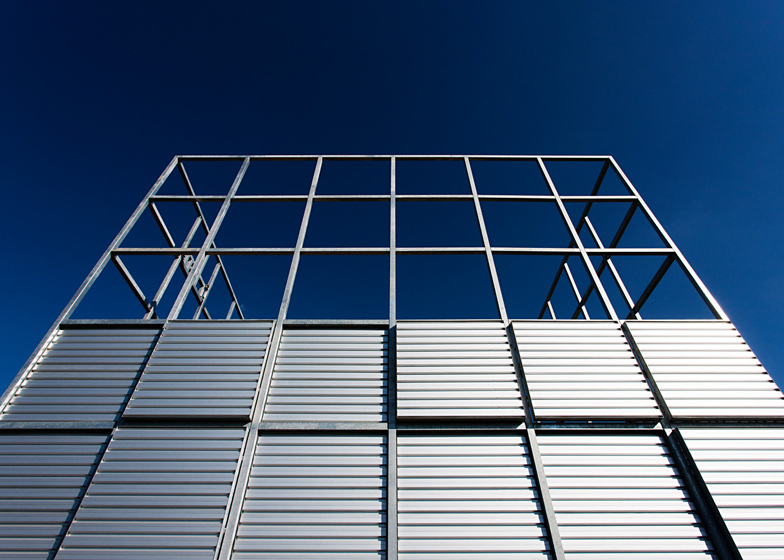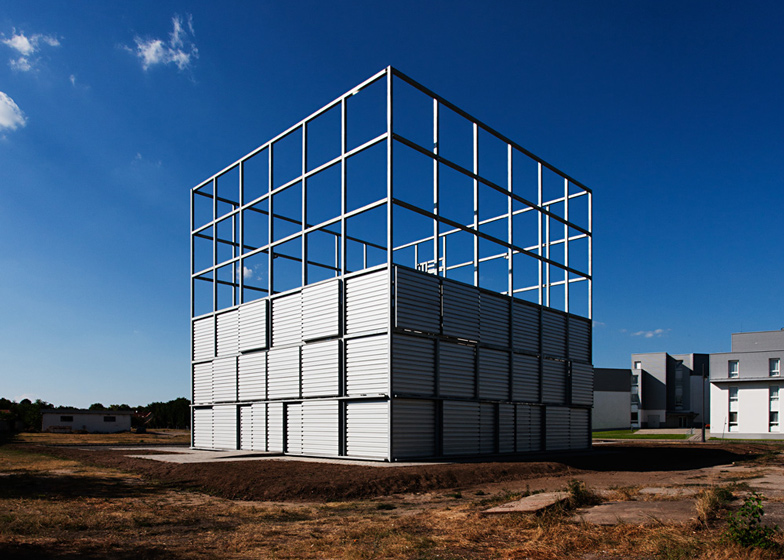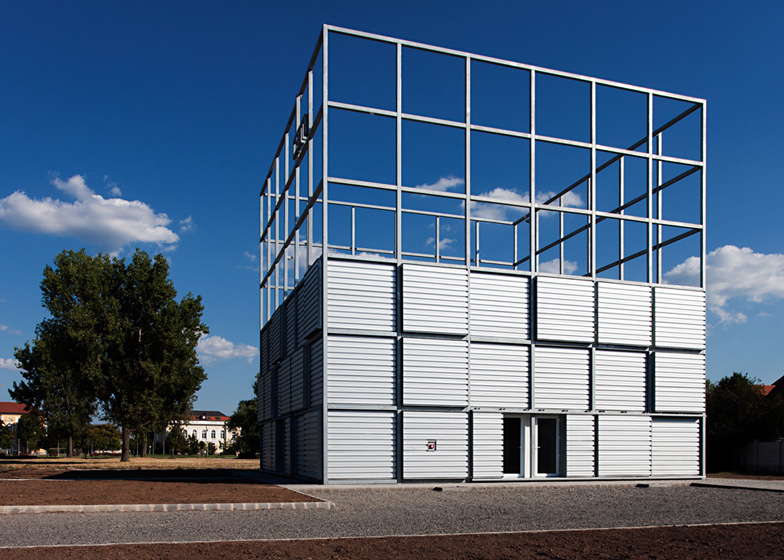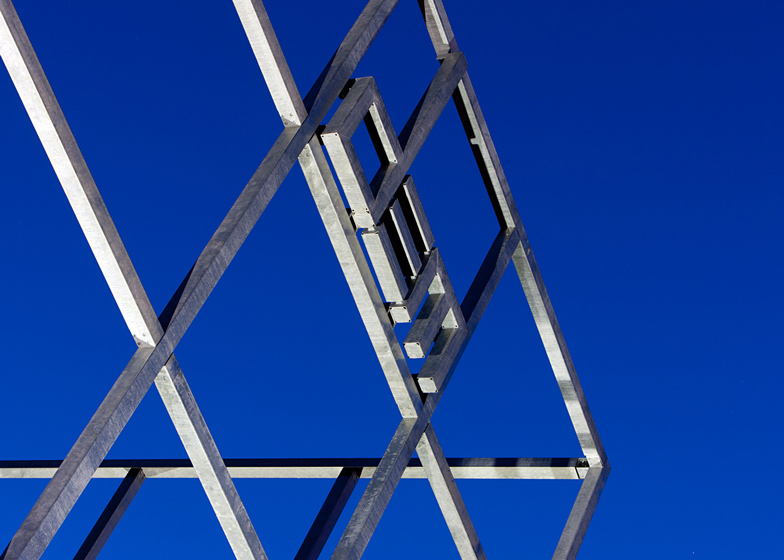This engineering research facility at the University of Debrecen, Hungary, by NAPUR Architect has a steel-panelled facade that can fold open to let daylight penetrate the laboratories inside (+ slideshow).
Budapest firm NAPUR Architect designed the steel-framed building to accommodate the university's power engineering department, which researches and demonstrates electrical systems including generators, motors and transformers.
The two lower levels of the building house laboratories and teaching areas, while an open-air metal cage-like structure on top of the building functions as a research area for solar and wind energy.
The corrugated steel facade panels slide back to reveal windows on three corners of the ground floor and at the entrance, increasing or decreasing the amount of light inside each laboratory.
"The mobile frontal elements can provide full daylight or full darkness in internal spaces at any time of the day," said architect Marcel Ferencz.
"The panels at the entrance are also used to dim the central space for lectures," he added.
The first floor contains the power-engineering systems, a control area and service spaces.
The interior is heated via panels on the walls, floor and ceilings, while exposed concrete surfaces and work benches feature throughout.
Other laboratories we've featured are an electrical testing facility wrapped with crinkled polished metal, a pair of concrete laboratories elevated on red metal stilts and a cement manufacturing laboratory with a tapered concrete roof.
See more stories about laboratories »
See more architecture and design in Hungary »
Photography is by Tamás Bujnovszky.
Here's a description from the architects:
DEM Power Engineering Demonstration Centre
The unique 300 m2 power engineering laboratory building realised in Hungary at the campus of the University of Debrecen explores and demonstrates the architectural and building power engineering connections of the climate change.
In the building open to the public the most up-to-date power engineering systems are presented in a manner understandable also by nonprofessionals, including technical solutions from the future of architecture installed freely, outside the walls without any covering.
The mobile frontal walls of the steel cube consisting of 15x15 m regular square elements hide a building embedded in a perfect sheath of power engineering built according to the 'house in a house' principle.
The building's internal spaces - facing the four directions - demonstrate different usage comfort levels adjustable individually for each room by employing a variety of wall, floor, ceiling and air heating.
The mobile steel frontal providing for shading can be moved as desired by the time of day.
The mobile frontal elements can provide full daylight or full darkness in internal spaces at any time of the day. The solar power systems installed on the roof and the geothermal probes ensure that the building's power consumption is nearly zero.
Architects: Marcel Dla Ferencz and Gyorgy Detary.







